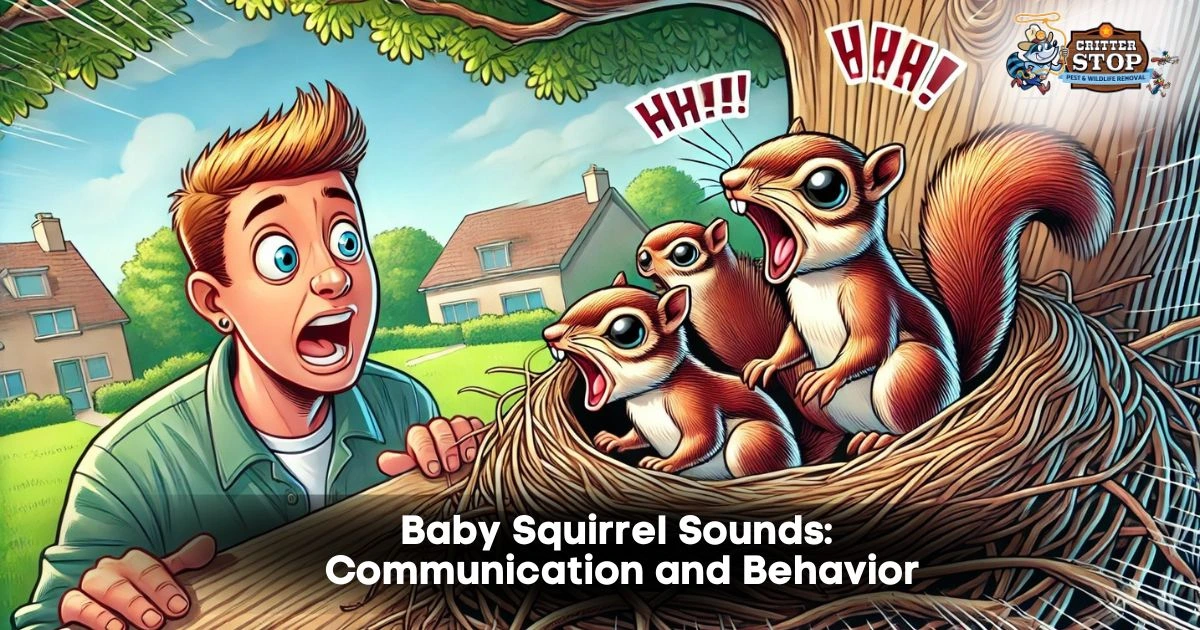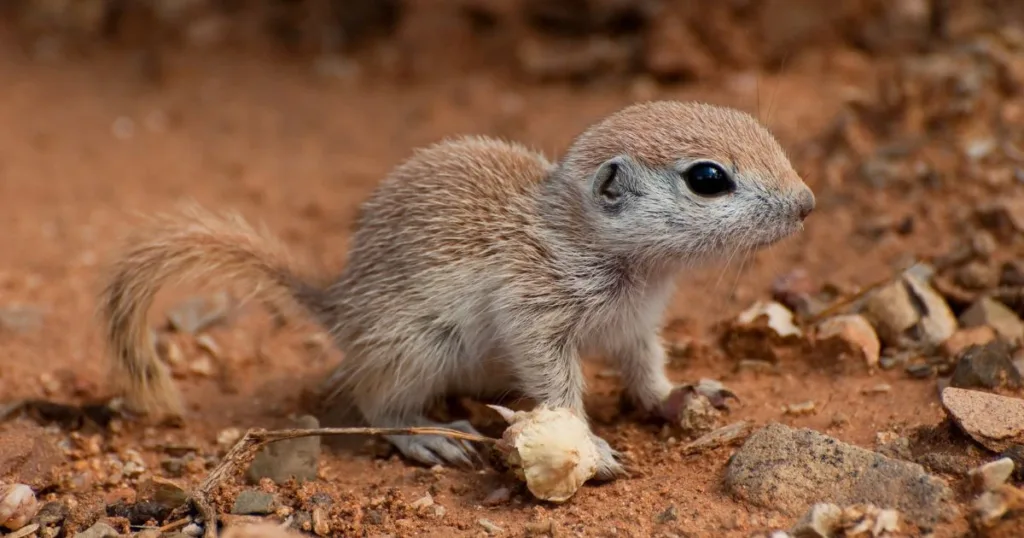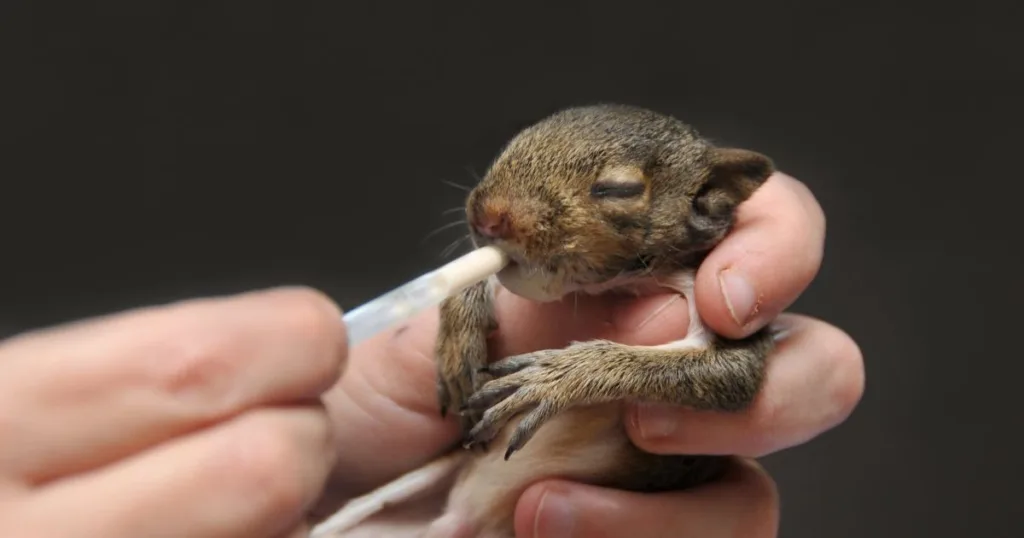
As you observe baby squirrels, you may be fascinated by the various sounds they produce. Each sound serves a specific purpose, from calling for their mother to signaling discomfort. Understanding these baby squirrel sounds is essential for recognizing their needs and behaviors.
You might notice high-pitched chirps and soft whimpers, which typically indicate curiosity or a plea for attention. In contrast, distressed squeals often signal fear or danger. By tuning into these vocalizations, you can gain deeper insight into their emotional states.
Listening closely to baby squirrel sounds can enhance your appreciation of wildlife and foster a connection with these lively creatures. Whether a nature enthusiast or simply curious, exploring these vocal cues can enrich your outdoor experiences.

Baby squirrels communicate through a variety of distinctive sounds. These sounds are crucial in expressing their needs and emotions, signaling everything from hunger to distress. Familiarizing yourself with these sounds can enhance your understanding of their behavior and well-being.
Baby squirrels produce several types of sounds, each serving a specific purpose. Common sounds include:
These varied sounds signal different emotional states and situations. Recognizing them can help you respond effectively to their needs.
Each sound made by baby squirrels carries a distinct meaning. For instance, chirping while playing may express joy and contentment. Conversely, whining signals that the squirrel is hungry or needs nurturing.
Squeaks often indicate that a baby squirrel feels threatened or scared. Caretakers must respond appropriately to such sounds to ensure the squirrel feels safe. Trills, often used during social interactions, demonstrate bonding behaviors among littermates.
Observing these sounds in context helps you better interpret what a baby squirrel is trying to communicate. Understanding these nuances enhances your awareness of their needs and emotional states.

To effectively study baby squirrel sounds, you need the tools and techniques to capture their vocalizations. This section will guide you in utilizing the equipment and interpreting your findings.
Start with a quality recording device. Digital voice recorders or smartphones with good microphones can clearly capture baby squirrel sounds. Using external microphones can enhance audio quality significantly.
Location is key. Choose areas where you often see or hear baby squirrels, such as near nests or feeding sites.
Timing is essential as well. Early morning or late afternoon typically offers higher activity levels.
Additionally, a notebook or digital app helps to jot down observations, noting the circumstances of each vocalization. Track the types of sounds and any behavioral context to enhance your recordings.
Listening back to your recordings can reveal distinct baby squirrel sounds. Focus on variations like whines, chirps, and squeaks. Each sound may indicate different emotions or needs, such as distress or hunger.
Establish a catalog of sounds. Create a table to categorize recordings based on pitch, duration, and frequency.
For example:
| Sound Type | Description | Context |
| Whine | High-pitched and repetitive | Seeking attention |
| Chirp | Short and sharp | Alerting to danger |
| Squeak | Quick and soft | Expressing contentment |
Compare your findings with existing literature or online resources. This step helps confirm your interpretations and deepens your understanding of baby squirrel vocalizations.

Hearing baby squirrel sounds can be distressing, especially if they’re in your attic or yard. These sounds often include squeaks, chirps, and sometimes chattering. Knowing how to address this issue is crucial for maintaining a peaceful home.
Critter Stop has earned positive feedback and high ratings for quality service and commitment to customer satisfaction. For safe and professional help, contact them at (214) 234-2616. Don’t let noisy squirrels disrupt your daily life.
Baby squirrel sounds can reveal necessary information about their needs and behaviors. Understanding these sounds helps you identify potential issues, locate squirrels, and respond appropriately.
Baby squirrel sounds such as high-pitched squeaks often indicate hunger or distress. If you hear persistent calling, it suggests the baby is seeking attention or food from its mother. Observing these sounds can help you determine whether the baby squirrel requires assistance.
You might hear soft chirps or squeaks in an attic that distinguish baby squirrels. These sounds are typically higher-pitched compared to adult squirrels. Pay attention to the frequency and volume; a mother’s call will sound different from a distressed baby.
As baby squirrels mature, their vocalizations evolve to reflect their developmental stage. Younger squirrels may emit softer and more frequent sounds, while older ones produce louder, more varied calls. This change indicates their growing independence and different needs.
In urban settings, baby squirrel sounds are often found near nests in trees, attics, or parks. These locations provide shelter and proximity to food sources. You can hear their calls near residential areas where they nest and forage for food.
Yes, baby squirrel sounds can be crucial for locating an orphaned squirrel. The squirrel may be orphaned if you hear persistent cries without a responding mother. Listening for these sounds can guide you in finding and assisting a distressed baby squirrel.
Visit our Critter Library and learn more about our furry friends